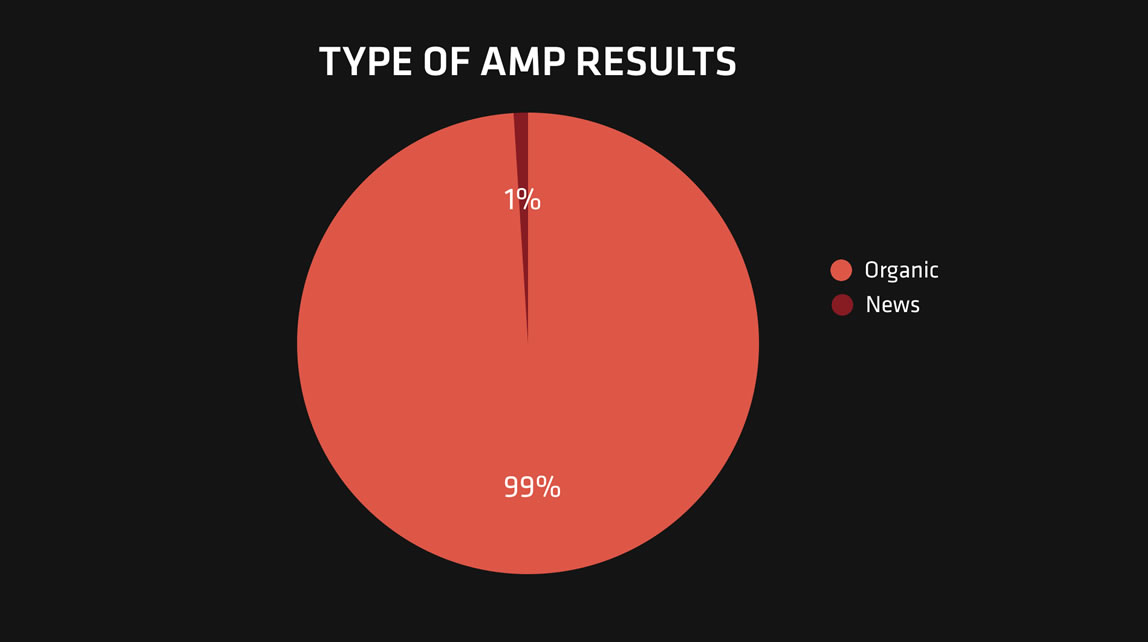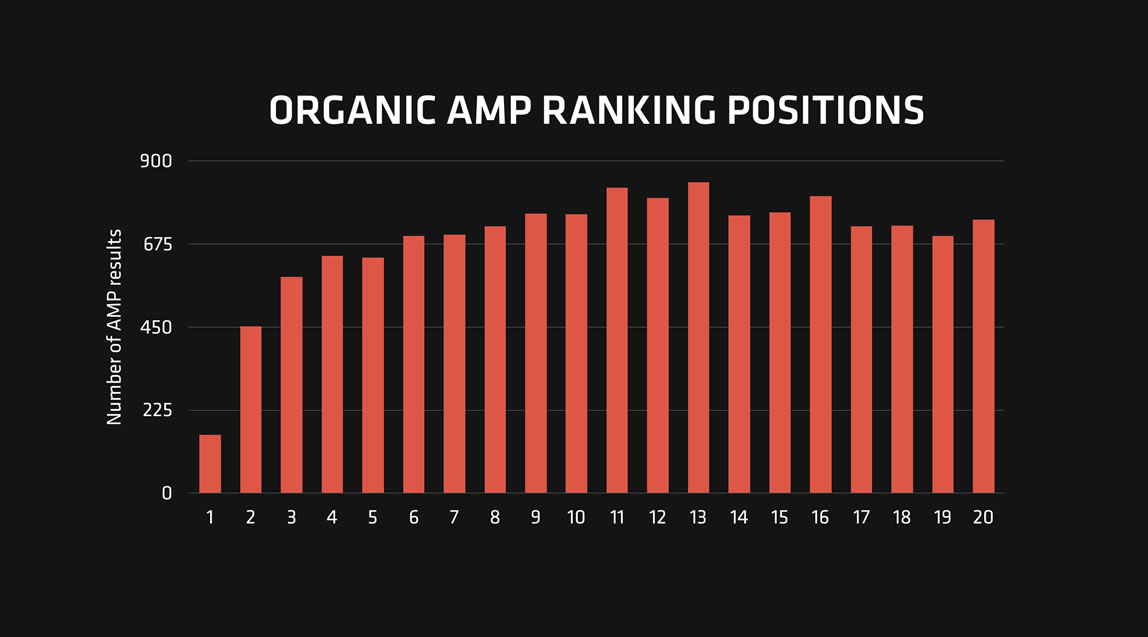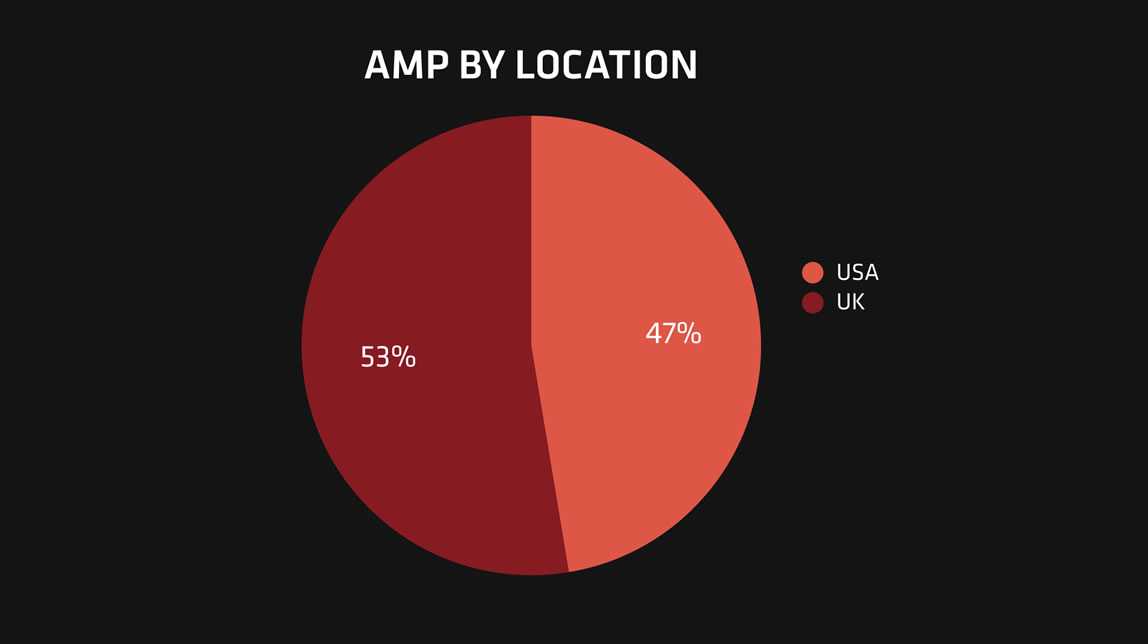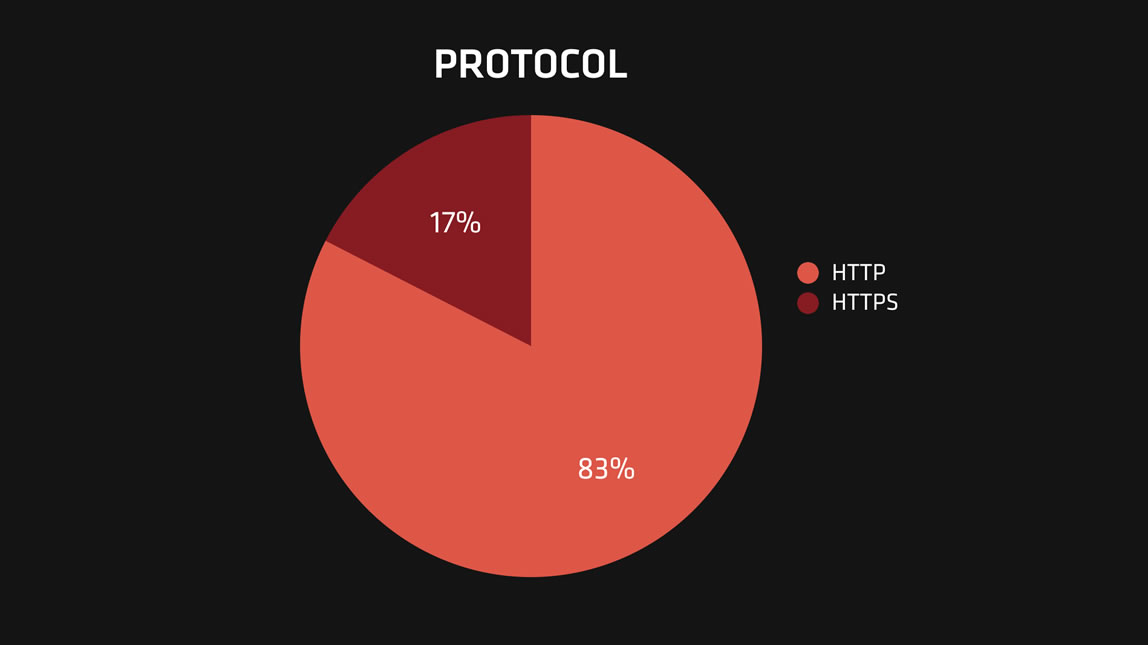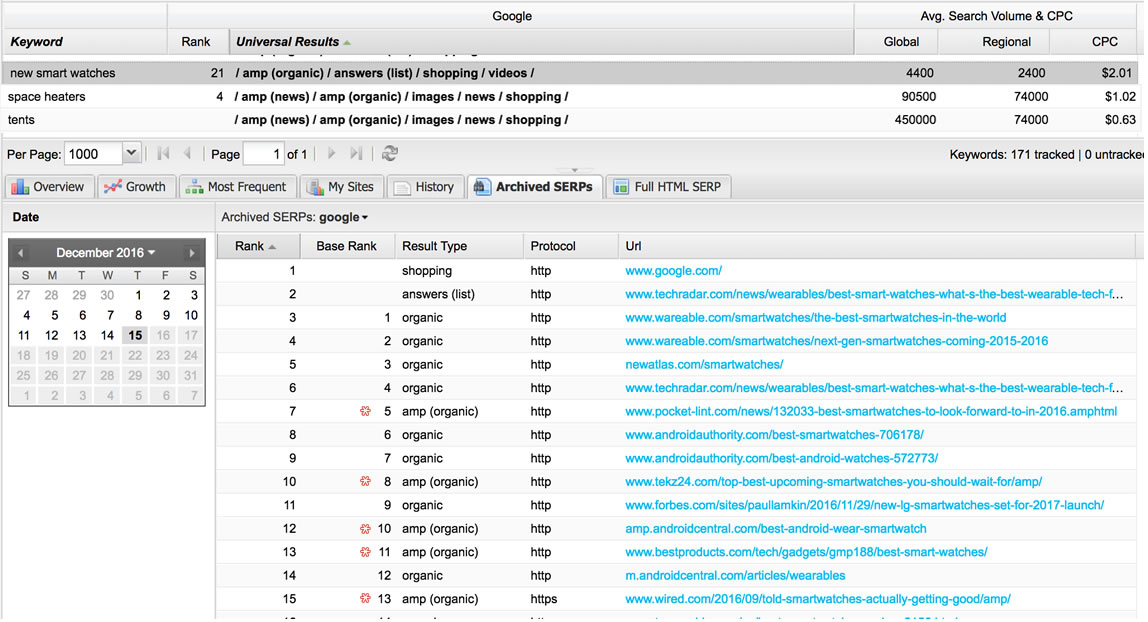STAT clients can now track and analyze Accelerated Mobile Pages to their heart’s content. Here’s a few things they can uncover.
AMP is the talk of the SEO town.
For those of you not in the know, an AMP is a site or page built using the AMP (Accelerated Mobile Page) framework. Officially integrated into Google’s mobile SERPs back on February 24, 2016, AMP has been rising in popularity ever since.
As the name suggests, AMPs are all about stripping out unnecessary page features — like pesky pop-up ads and annoying interstitials — that bog down the load time of a mobile page. The bottom line is that AMPs are super light, load super-fast, and give mobile users an even better search experience.
In STAT, we track the two kinds of AMP results: news and organic. News AMP results show up in the news (or “Top Stories”) carousel, and organic AMP results appear with other organic results on the SERP.
Now that we can track these bad boys in STAT, we wanted to dig into AMP results to see how they actually appear on the SERP. Because we’re nerdy like that. So, we looked at 11,879 retail keywords in the US and UK, a portion of the dataset from part of our upcoming study all about retail intent. (Watch for that in February!)
How often does each AMP subtype appear?
We chose retail keywords — like [buy coffee maker] and [affordable air conditioners] — because we know that news and content-heavy websites have been early and frequent adopters of AMPs, and were curious to see how these results played out with a different keyword set.
So, from our list of 11,879 keywords, we extracted the top 20 Google mobile results for each keyword, which resulted in 237,580 rows of data. Within those 237,580 results, we found 13,823 organic AMP results (5.8 percent), and 121 news AMP results (.05 percent).
Retail keywords return few news results
But organic AMP results appear in full-force.
As we suspected, because our keyword set is strictly retail-focused, we see significantly less AMP news results. If our keyword set were about sports or current events, we’d see a much higher number of news stories, and therefore a higher number of AMP news results.
We were, however, surprised to see just how many AMP URLs were ranking organically for this keyword set, underscoring the fact that AMP is not just for SEOs trying to snag a position in the news carousel.
Because the news results are so teeny tiny, we’re going to (gently) kick them to the curb for the rest of this little study, and focus on the 13,823 organic results.
Where do AMP results appear on the SERP?
When we looked at the top 20 search results, organic AMPs appear pretty consistently across all positions, but we did notice that they’re a little less likely to appear in positions one through five. In our data set, organic AMP results appeared most frequently in position 13, and least frequently in position one.
What position do organic AMP results hold?
We see the most in position thirteen and the least in position one.
According to a few SEOs that we spoke with, Google has said that they’re not currently giving preference in their algorithm to AMP results, but as more SEOs start employing the practice, we have a feeling this will change — just one more reason to track this new result type and chart the growth.
Does location make a difference?
We found that our UK keywords returned 12.7 percent more organic AMP results than the same keyword set in the US.
The UK saw more AMP organic results
Almost thirteen entire percent more to be exact. Any guesses as to why?
While not an astronomical difference, it’s still somewhat significant, and we dreamed up all sorts of reasons why this might be the case. Maybe UK SEOs jumped on the AMP bandwagon sooner, or certain large UK publishing groups adopted the practice for all of their properties, or as our friend Kelvin Newman suggests, perhaps smaller organizations allow for a more agile role out.
One Twitter follower proposed that the spike might have been Brexit-related, and while correlation doesn’t equal causation, as good scientists, we can’t rule that possibility out.
What does protocol have to do with AMP?
Out of our 13,823 organic AMP results, only 17 percent of the URLs were HTTPS. We were surprised at how low this number was, especially since encrypted websites are the first line of cyber defense, not to mention that Google has stated that it uses HTTPS as a ranking signal.
HTTP is king...for now
Our retail keyword set revealed 83% of sites are still using HTTP.
That said, in a recent Search Engine Journal article, Google also indicated that HTTPS would be a requirement for AMP in the near future. So we’d expect to see a shift in these results fairly soon.
which sites are OWNING WITH AMP?
We wanted to take a closer look at the sites appearing most frequently for AMP organic results. But first, we whittled down our 13,823 organic AMP results and focused on keywords with a monthly search volume of 100 and over, leaving us with 3,606 AMP results to dig into. A bit more digestible.
Here are the top sites which held the most AMP results out of the 3,606:
- Lifehacker.com = 74 (2% of all results)
- Heavy.com = 131 (3.6%)
- digitaltrends.com = 151 (4.1%)
- independent.co.uk = 213 (5.9%)
- bestproducts.com = 278 (7.7%)
- m.eBay.com = 761 (21.1%)
Looking closer at the sites ranking multiple AMP results, the clear winner in our group is eBay, one of the very few retail sites in our dataset, with 21 percent of the 3,606 results. They are kicking some serious butt over the types of sites that typically use AMP — content, news, and reviews. (Go, eBay, go!)
WHAT’S WITH THE URL STRUCTURE?
Next, we zeroed-in on URL structure, and found that almost every ranking result contained “AMP.”
Many sites threw /amp/ at the end of the URL, while m.wikihow used ?amp=1, Pocket-lint.com opted to add .amphtml to the end of theirs, and both Reddit and The Guardian presented URL structures of amp.URL.com. Everyone adds their own little bit of flair.
Look at this AMP-le SERP
There are a lot of AMP results on this SERP, each sporting a different AMP URL structure.
There were two things, however, that made us scratch our heads a little.
First, Hearst Publishers didn’t have a single “AMP” in their URLs, instead opting for “GMP,” which we suspect stands for Google Mobile Pages. We saw this in many of their their media properties, including elle.com, GoodHousekeeping, BestProducts.com, Esquire.com, Seventeen.com, and PetCareRx.com.
And second, a few sites, like Forbes.com, didn’t include any defining characteristics in their URLs to indicate AMPs.
After some poking around the interwebs, we’ve concluded that an AMP-specific URL structure might not be necessary. As long as your site mark-up follows the AMP framework, you should be GTG.
However, as you know, we like to track ALL the things, so despite it not being required, we strongly recommend having a defining URL structure that lets you track your AMP pages. Not only will you be able to see how well those pages are ranking, you’ll know when they get indexed and start working their way up the SERPs.
What other SERP features appear alongside AMP results?
Finally, we looked into which universal results appear with AMP results on the SERPs.
For this specific retail keyword set, it wasn’t surprising to see that 57 percent of SERPs that had an AMP result also had shopping boxes, 64 percent had videos — people (for some reason) love those unboxing videos! — and images showed up with AMPs 25 percent of the time.
This makes sense, as these SERP features help consumers learn more about the product they’re after.
What did surprise us, however, was that all the other universal result types were somewhat absent on our AMP SERPs. Answers boxes, news, places, twitter boxes, maps, and carousels each appeared less than 5 percent of the time.
SO WHAT DID WE LEARN TODAY?
Summing it up:
- AMP is not just for news and content sites anymore, retail should sit up and pay attention.
- Protocol is currently not a factor, but HTTPS-required is coming soon.
- Although the Google algorithm isn’t currently giving preference to AMPs, they may start doing so once more people adopt it. This is a major reason to be tracking your pages.
- Having well-defined, descriptive URL structures will help unveil your AMP performance in your tracking tools.
If you’ve implemented an AMP strategy, tracking your pages in STAT will make it easy to see how well they’re doing in the SERPs. And for those of you still on the fence, you’ll be able to dig into the data and see how much of a threat competitors with AMP pages truly are.
We have so much more to track and learn as AMP continues to be rolled out by SEOs across the world. And we’ll continue to track and watch, updating you with our findings along the way.
Ready to start AMP tracking in STAT?
AMP tracking is live and ready for STAT clients to put to work. If you need some help setting things up or have any questions, email ClientSuccess@getSTAT.com — they can help you uncover the most useful way to track this result type for your exact business requirements.
Not a STAT client yet? Drop us a line and we’d be happy to show you a personalized demo, including AMP tracking, and all the other good stuff that STAT can do.
For even more information: head to the AMP Project, or put your eyeballs on this recent presentation by Jesse Semchuck, Director of Online Marketing at Purch.
